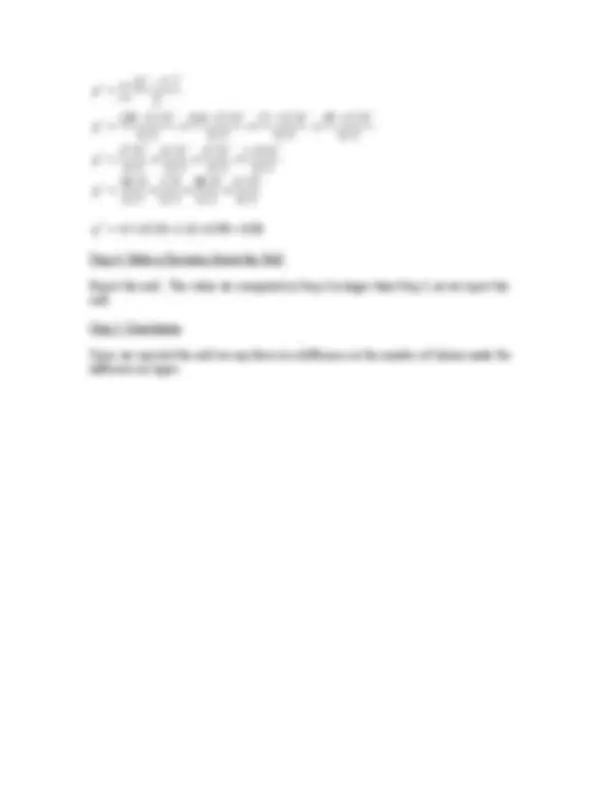



Study with the several resources on Docsity

Earn points by helping other students or get them with a premium plan


Prepare for your exams
Study with the several resources on Docsity

Earn points to download
Earn points by helping other students or get them with a premium plan
Community
Ask the community for help and clear up your study doubts
Discover the best universities in your country according to Docsity users
Free resources
Download our free guides on studying techniques, anxiety management strategies, and thesis advice from Docsity tutors
An outline of lesson 19 on chi-square goodness-of-fit test, which is used to analyze categorical data and test whether observed frequencies differ from expected frequencies. The concept of categorical data, the hypothesis testing process, and the calculation of the chi-square statistic. It also includes an example of applying the test to insurance claims data.
Typology: Study notes
1 / 3

This page cannot be seen from the preview
Don't miss anything!


Lesson 19 Chi-Square
Outline Categorical Data Goodness of Fit Test -observed frequency -expected frequency -X^2 statistic Example -hypothesis testing
Categorical Data As mentioned at the start of the lesson with correlation, all of the data we have been working with so far involve measurement data. We actually took measurements from units in our sample to create our distribution. Often times, however, we will want to analyze categorical or qualitative data as well. For categorical data we will not have a measure of individual units in the sample. Instead, we will analyze frequencies or counts of people falling into different categories or groups. When analyzing categorical data we say the test is non-parametric. Thus, all the tests we have learned before this point were parametric tests.
Chi-Square Goodness-of-Fit Test We will learn two different Chi-square tests. The first of these is the goodness-of-fit test. With the goodness-of-fit test we will test whether the data “fit good” with what we would expect if only chance factors were operating. For example, if I measured the number of insurance claims for different car types, I might have the following data:
High Performance Compact Mid Size Full Size 20 14 7 9
Notice that our data is now frequency values or how many values in our sample fit into different categories. The test will tell us whether there is a difference in how many values fall at different levels of the single variable (car type). Is there a difference in number of claims for different car types?
The values we observe in our sample are the observed frequencies ( f (^) 0 ). What we want
to know is if they differ from the frequencies we would observe by chance. The values we would expect if there really was no difference in the number of claims made for
difference in the frequencies for each level of the variable, then we would expect equal numbers of claims for each car type. Since there a total of 50 claims in our sample, and
there are 4 different levels of the variable, then we would expect 12.5 claims for each car type. Thus:
High Performance Compact Mid Size Full Size 20 14 7 9 Observed 12.5 12.5 12.5 12.5 Expected
What the Chi-square statistic does is to compare the values we observe to those we would expect if there was no difference. If what we observe varies a good bit from the values we would expect if there was not difference, then there must be a difference. If there really was no difference in the number of insurance claims, for this example, then we would expect the number of claims to be close to the expected frequencies.
e
o e f
2 f^ f^2
value, square the difference, and divide by the expected frequency. We then sum up all of the values we computed.
Let’s take a look at the example we have been working on within the context of hypothesis testing. We will continue the problem with Alpha set to .05.
Step 1: Write the Hypotheses for the test.
Here we are stating that the observed frequencies are the same as the expected for the null.
Step 2: Find the Critical Value Again we will use Appendix A to find the critical value, see page A-34. For our test degrees of freedom is equal to C – 1, where C is the number of categories
Df = 4 – 1 = 3
2 Χ (^) critical = 7.
Step 3: Run the Statistical Test
We have already computed the expected values, so we just need to plug the numbers into the formula. High Performance Compact Mid Size Full Size 20 14 7 9 Observed 12.5 12.5 12.5 12.5 Expected